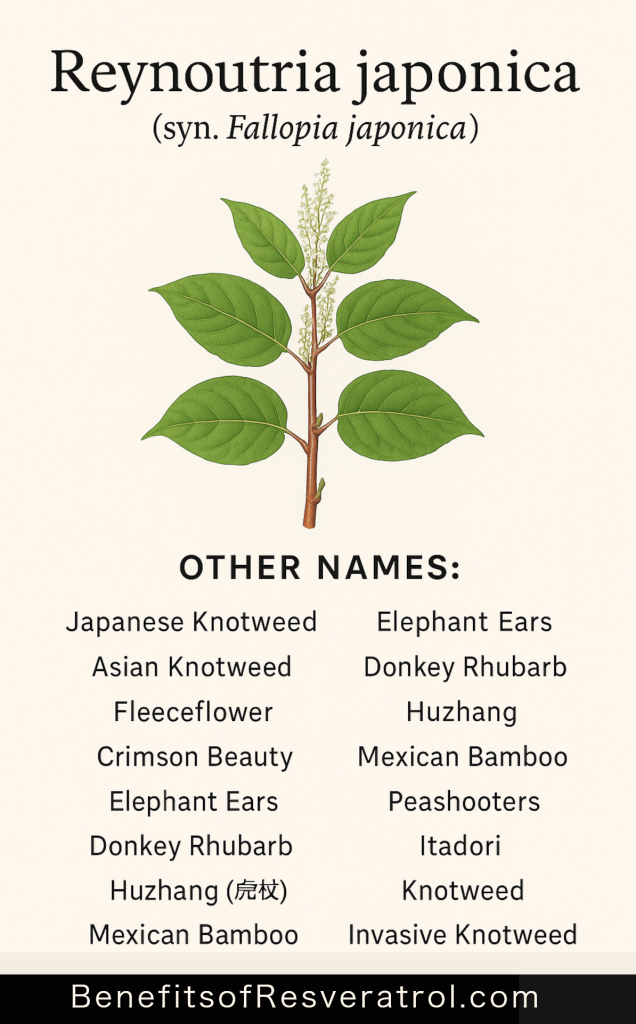The current accepted scientific name for Japanese Knotweed is Reynoutria japonica, though it is still widely cited under its former classification, Fallopia japonica, and even earlier as Polygonum cuspidatum. These names reflect its shifting taxonomy as botanists have reclassified the species based on evolving genetic and morphological understanding.
- Genus: Reynoutria
- Species: japonica
- Family: Polygonaceae (the buckwheat or knotweed family)
The species epithet “japonica” refers to its native origin—Japan, although it also grows naturally in China, Korea, and Taiwan.
Common and Regional Names
Outside of scientific circles, Japanese Knotweed goes by many names. Some of the most common include:

- Japanese Knotweed – The most widely used English name, referring to its country of origin and distinctive knotted stems.
- Asian Knotweed – A broader name referencing its range across East Asia.
- Fleeceflower – Refers to its white plume-like flowers.
- Crimson Beauty – A horticultural name, often used to describe ornamental varieties.
- Elephant Ears – Due to the shape of its large, heart-shaped leaves.
- Donkey Rhubarb – A nickname reflecting its resemblance to rhubarb, though it is not edible in the same way and is unrelated.
- Huzhang (虎杖) – The traditional Chinese name (pronounced “hoo-jahng”), also used in Chinese medicine.
- Mexican Bamboo – A misleading common name based on the hollow, bamboo-like stems; the plant is neither Mexican nor a true bamboo.
- Peashooters – A children’s nickname in the UK, referencing the hollow stems.
Medicinal and Cultural Names
In traditional Chinese and Japanese medicine, the plant is known for its purported health benefits, because of its resveratrol content, and goes by names such as:
- Itadori (Japanese) – Translates roughly to “pain remover,” due to its historical use in folk remedies.
- Huzhang (Chinese) – Often used in herbal formulas; its root contains resveratrol, the antioxidant compound also found in red wine.
Invasive Identity
In much of Europe and North America, Japanese Knotweed is simply called:
- Knotweed – A general term that can also refer to other species in the same family.
- Invasive Knotweed – To highlight its problematic status in non-native ecosystems.
It is listed as one of the worst invasive plant species in many countries, particularly in the UK, Ireland, Canada, and parts of the United States, due to its rapid spread and ability to damage concrete, roads, and building foundations.
Conclusion
Whether you call it by its scientific name or not, Reynoutria japonica, Japanese Knotweed, or Huzhang, this plant carries with it a story of scientific intrigue, cultural tradition, and environmental caution. Understanding its many names helps paint a fuller picture of a species that, for better or worse, has rooted itself deeply into both ecosystems and human awareness.

